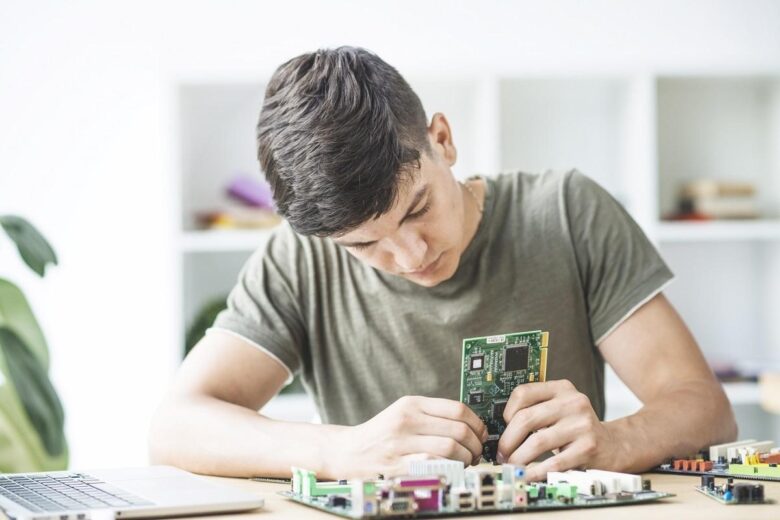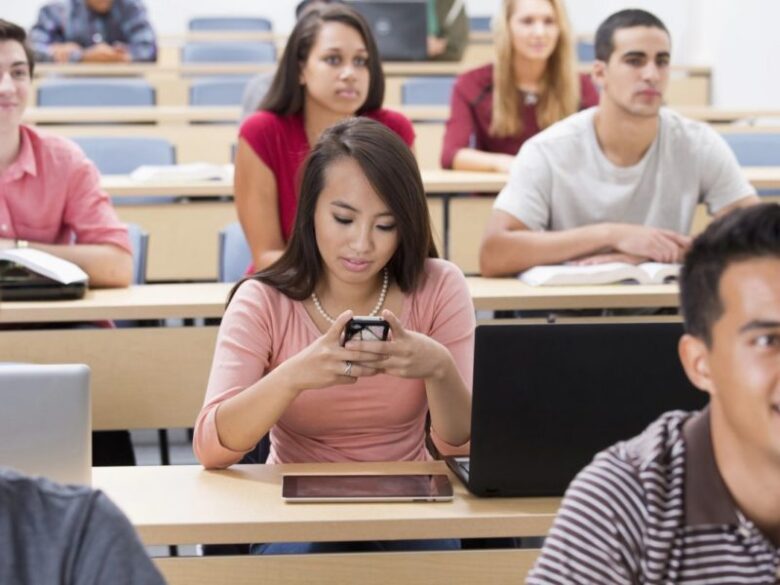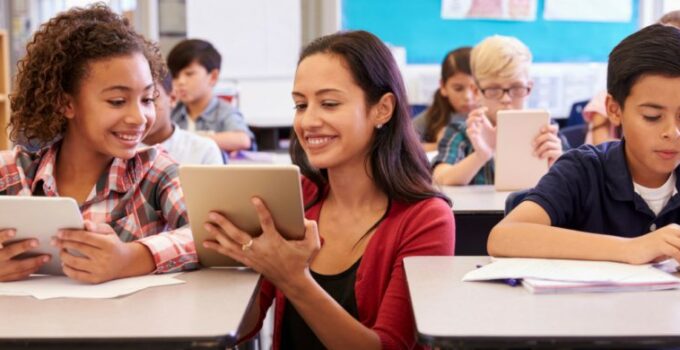The advancement of technology and its introduction to education has both positively and negatively affected students. Teachers have adopted new teaching methods using the new technology, while students can now maximize their learning with the many resources made available to them.
Technology has become an integral part of a student’s daily lives. Although many people question the effects of technology on student’s development, it’s finding more applications in educational settings. Here are some of the positive and negative effects that technology may have on students.
Positive effects of technology on students

Source: freepik.com
Facilitates and enhances learning
Newer technologies such as smart boards, 3D printers, paper writer sources and many more are finding their way into the classroom. The integration of these technologies in the educational process helps to engage students in the learning process. This has made teaching more meaningful for students and helped in increasing their creativity.
Moreover, gadgets such as phones, tablets, and laptops available to students make it easy for them to access learning resources. This assists them in completing their school projects and assignments efficiently. Education portals, LMS systems, virtual classrooms form the future of edutech as they help students cope with the stresses of learning.
With new challenges that coronavirus has put up, the importance of technology-based learning methods has increased even further. The tech companies are already innovating to come up with more collaborative and user-friendly tools and software to aid learning across all levels and across boundaries. With most of the schools and colleges facing a shutdown, remote learning has kept things going for the welfare of students.
Helps students to develop their minds
One of the most important parts of a person’s body is their brain. To help improve its functionality, you have to use it more often. To this end, technology helps students develop their minds by providing a huge source of information.
Students can easily access books, journals, writing assistance by EduBirdie, and other learning resources to help them with their research and assignments.
Moreover, there are games developed that can help significantly improve a student’s problem-solving skills. These games force students to use their minds to come up with solutions to overcome the roadblocks and challenges set in these games. They can apply whatever they learn to solve real-life issues like completing their homework or solving technology-based hurdles.

Source: bbc.com
Prepares students for the future
The evolution of technology has come a long way and it continues to evolve every day. Incorporating technology into a student’s daily life will help prepare them for the future. It’ll also give them a better understanding of how technology evolves. Besides, exposing them to technology helps to motivate students to learn more since they can relate to it.
Equip students with technical skills
Emerging technologies will become a vital part of our future. Therefore, it’ll be necessary for students to be equipped with the necessary technical skills to work with these new technologies efficiently. A great advantage of introducing new technology to students in preparing them adequately for a job market that will highly depend on technology.
Negative effects of technology on students

Souece: freepik.com
Makes students lazy and kills their creativity
According to AcademyOcean, technology may help students easily get all the learning resources and information they need, but it also serves to kill their creativity. The availability of this limitless information makes students lazy as they don’t see the need to carry out proper research.
That’s why the market is flooded by graduates who are only good on paper but lack the technical skills required in their field of study. This is sadly one of the negative effects that technology has on students.
Misinformation that misguides students
Students have access to limitless information on the internet but there isn’t any guarantee that the information they’re accessing is accurate. This is mainly because website owners are more concerned about getting their websites ranked higher on search engines than posting accurate content.
Many of these websites contained unverified information that they’ve copied and pasted from different sources. This information always serves to misguide learners when they’re researching a particular topic. Misinformation can negatively impact a student’s educational development.
A major source of distraction
More students are using tablets, laptops, and smartphones in class to keep up with whatever their lessons. This is due to the adoption of these gadgets by many schools as a means of teaching. These devices come with social media platforms like Facebook, Instagram, and Snapchat that are highly addictive.
Instead of using these devices to concentrate on their studies, students often find themselves more interested in updating their status and checking that of their friends. The distraction brought by new technology increases the gap between learners and their educators.

Source: freestudy.com
Disconnects students from the real world
Teachers have adopted new teaching methods due to the advancement of technology. They can use the different online tools available to teach their students without communicating with them physically. This has eliminated the personal touch that education once had since students can no longer interact and share their problems with their teachers.
It’s more difficult for a student who’s weak in a topic to get the attention and support they need from their teacher. Therefore, it’s important that teachers use both verbal and online tools in teaching students.
Conclusion
Technology is like a double-edged sword that, when used in the right way, can have a positive impact on a student’s life. The introduction of technology has made education more flexible and simpler. However, teachers and parents must ensure that students use technology in the right way to minimize its negative effects.




